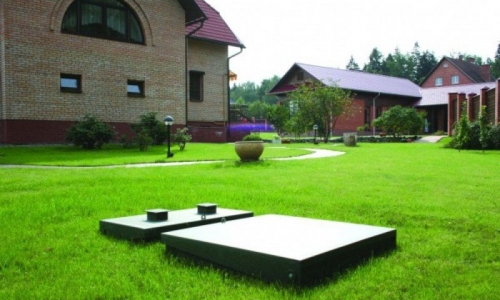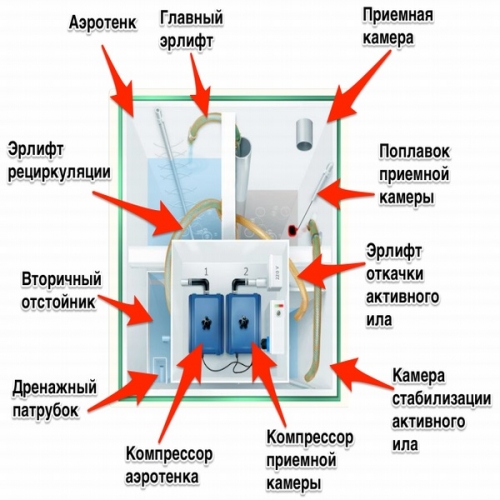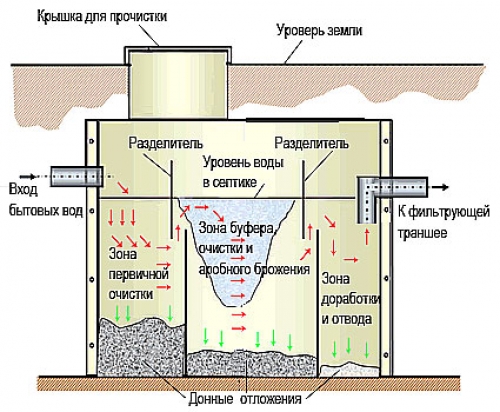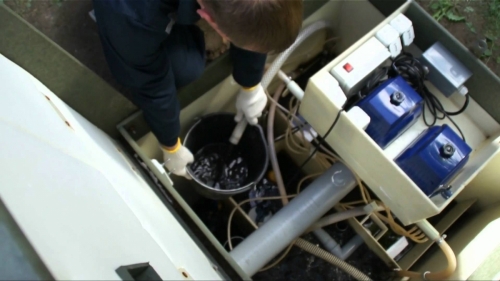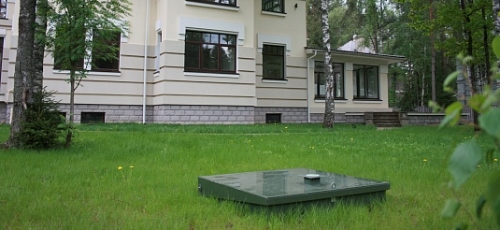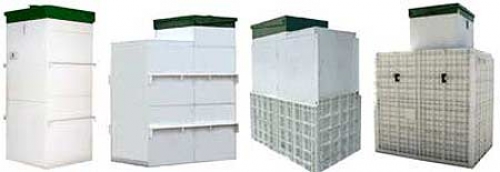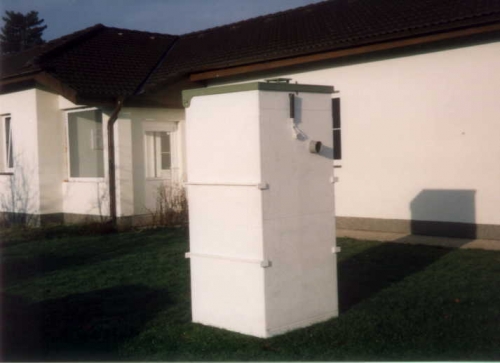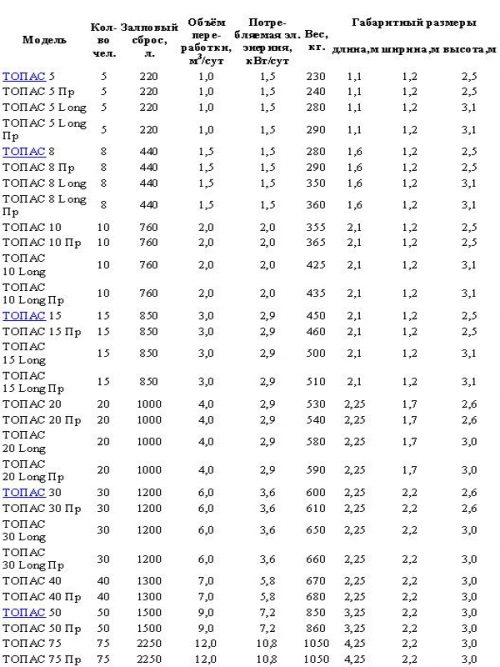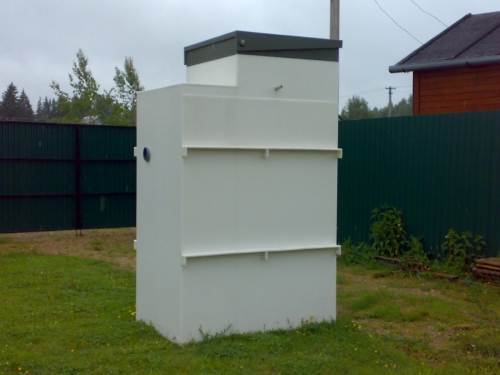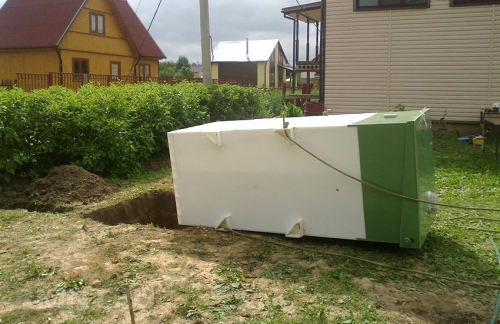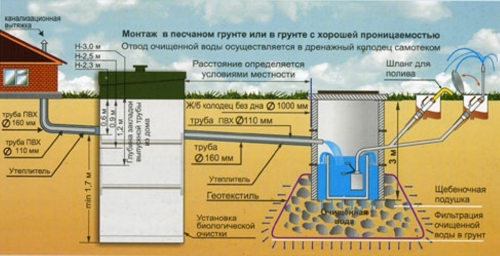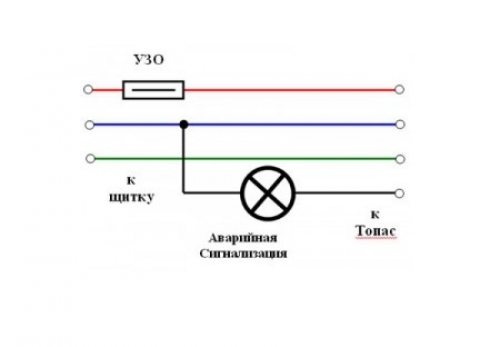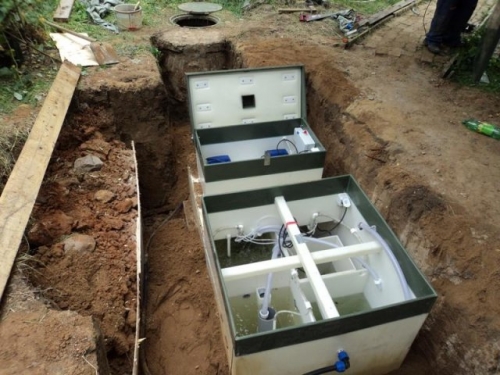The garage, unlike the protected parking lot, will provide the protection of the car not only from ...
|
|
Not everyone knows that in addition to ordinary doors made of metal and wood on sale there are more ... |
After the installation of drywall, the walls in the room remain uneven and have incomplete ... |
Septic Toppa: the principle of operation and installation
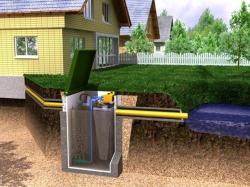
The arrangement of water supply and sewage systems on the site is one of the most responsible and complex issues that the owners of private houses and cottages face.
Many homeowners abandon the traditional methods of disposal and cleansing of sewage, preferring modern, more effective and reliable cleaning methods. One of these methods is the use of the installation of a septic tank. Consider the device, the principle of operation of the cleansing system, the installation procedure and the basic rules for the operation of the Topas septic tank.
Content
- The device septic tank
- Septic Toppa: The principle of operation of the cleansing system
- The advantages and disadvantages of the autonomous sewage system Septic Toppa
- Selecting Topas septic tank: types and their technical characteristics
- Installation and connection of the Toppik septic tank with your own hands
- Tips for the operation and maintenance of the Topas septic tank
The device septic tank
Septic taps Autonomous sewage, which cleanses wastewater by 98%. Processed water is unsuitable for drinking, but it is absolutely safe for the environment and does not have an unpleasant odor.
The device of the local treatment station is quite simple, and the basis of the septic tank is based on biological processes that occur in several stages.
Due to the clear structure of the internal device of the autonomous sewage system, a debugged cyclic work of the septic tank occurs
The following components of the equipment are involved in the purification process:
- Circle with air intake.
- The receiving chamber in it arrives in wastewater having the highest degree of pollution. Primary water purification is 45-50%.
- Airotomic camera in which water is cleaned by another 20-30%.
- Erlift with pumping installations provides water transfer between cameras.
- Air compressors pump air that supports the course of biological processes.
- The third chamber (usually pyramidal in shape) water purification and siege silt.
- Domination camera.
- A device for collecting non -processed particles.
- Hose sling silt.
- The output of purified water.
Septic Toppa: The principle of operation of the cleansing system
Septic tank copes with any effluents of household origin. At the output, technical water and silt are formed, which can subsequently use, as a fertilizer for a garden plot.
Such cleaning can be achieved through the use of active sludge containing dozens of bacteria. Aerobic (vital activity occurs in the cleaning system only in the presence of oxygen) and anaerobic (can do without oxygen) bacteria.
The entire cycle of work septic tank can be broken down by the following stages:
- Personnel come and accumulate in the receiving chamber.
- When the flow level reaches the boundary mark, the float is triggered, and the compressor is turned on.
- Anaerobic bacteria enter the chamber into the chamber.
- Large fractions of the drains decay into small particles.
- Mixed drains are served in aerialities.
- Personnel are re-processed by bacteria anerobes.
- Half -purified water enters the secondary sump. There is a separation into silt and water.
- Stocks are processed by anaerobic bacteria.
- Il enters the stabilization chamber, and water to the exit.
- In a stabilizer, Il is divided into fractions. Light fractions are pumped back to the receiver and participate in biological cleaning, and heavy fractions settled to the bottom.
The filter sludge, accumulated in the sump periodically, must be removed in order to prevent overflow of the container and failure of the entire sewer installation
The advantages and disadvantages of the autonomous sewage system Septic Toppa
Septic tank appeared on the market for treatment facilities 20 years ago, well established itself in Europe, and in recent years has gained popularity among consumers of post -Soviet countries.
The demand for the treatment plant is explained by its advantages:
- high efficiency of the septic tank;
- the ease of installation for installing the septic tank does not need to be concrete of the bottom of the pit;
- low operating costs (electricity costs are insignificant, there is no need to call the assigned machine);
- waste of stabilized silt can be used as fertilizer;
- lack of noise and vibration during the operation of the septic tank;
- lack of extraneous odors;
- compactness and strength of the installation;
- unpretentiousness to the type of soil;
- waste water that has undergone cleaning can be used for watering plants;
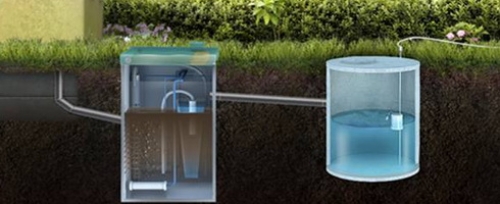
- a wide range allows you to choose the optimal type of septic tank based on the needs of a particular family;
- low costs for insulation of the installation (heat is released during anaerobic processes, so the risk of freezing is reduced);
- long life (about 50 years).
Septic Toppa: Reviews
Among the shortcomings of the Toppik septic tank include:
- the high cost of the cleansing system (you can buy Toppa septic tank not cheaper than 80 thousand rubles);
- energy dependence of the station;
- neglect the rules for maintenance and operation of the septic tank can lead to a serious breakdown and expensive repair of the device.
Selecting Topas septic tank: types and their technical characteristics
The TopPAs Septic lineup includes installations for summer cottage use, private houses, gas stations (Topas 5-20) and stations calculated for cleaning wastewater of a small cottage village (TPAP 100-150).
The numerical designation in the name of the goods indicates the number of conditional consumers is the main criterion for choosing a septic tank Toppa
For giving the best option, the TOPP-5 septic tank is the best option of small performance cleansing system. Such an autonomous sewage system will fully satisfy the needs of the family, consisting of no more than 5 people.
Technical characteristics TOPPA-5:
- the maximum allowable volley discharge of water 220 liters;
- septic tank performance per day processing of 1000 liters of wastewater;
- electricity consumption 1.5 kW/day;
- all installations are 230 kg;
- the overall dimensions are 2.5*1.1*1.2 meters.
If the septic tank connection depth is more than 0.8 meters, then it is necessary to install TPAP-5 LONG
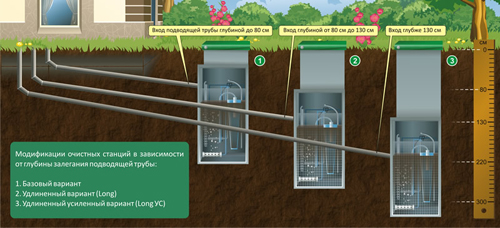
On the site where the pool is located, you need to use a septic tank with a greater performance of TPPA-8 or TOPA-10 (depending on the number of people living). Such models per day will be able to process 1,500-2000 liters of water.
The letter designations pr and mustache in the model range of septic tanks have the following decryption:
- Forced water drainage (necessary with a high level of groundwater, removal occurs periodically using the pump);
- The mustache of the reinforced water drainage (used if the septic tank is at a depth of more than 140 cm from the level of the sewer pipe).
The cost of autonomous sewage is influenced by the productivity of the Topas septic tank (the price of a single -chamber septic tank serving 5 people will be significantly lower than the price of a two -chamber model with enhanced water discharge, designed for permanent residence of 20 people).
Installation and connection of the Toppik septic tank with your own hands
Preparation of the pit
First of all, you need to choose a place to install a septic tank. Construction and sanitary standards prohibit the placement of the cleaning installation too close (less than five meters) to the residential building. However, it is not worth deleting too much, as this will increase the cost of building a pipeline.
Installation of the Topas septic tank begins with the preparation of the pit:
- For an autonomous TOPP-5 system with dimensions 1000*1200*1400 cm, you need to dig a pit in size 1800*1800*2400 cm.
- In parallel with the preparation of the pit, a trench is dug up for the pipeline.
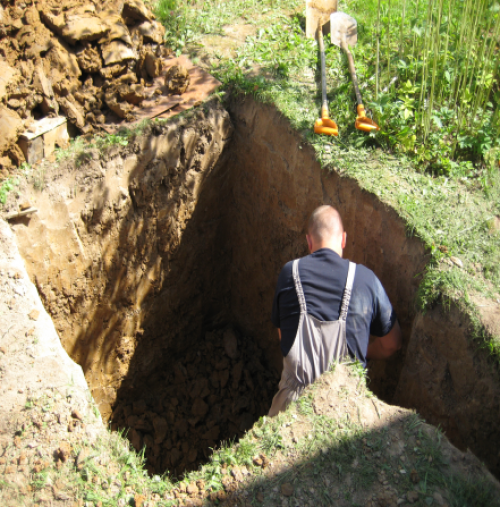
- At the bottom of the pit, you need to lay a sand pillow (15 cm).
- Set the formwork from the boards.
Between the wall of the pit and the septic tank body there should be a free space of at least 20 cm
Installation of the septic tank and the arrangement of the sewer system
Toppas 5 and 8 septic tanks can be installed in a pit without the use of lifting equipment, that is, manually. There are special holes on the stiffeners through which you need to pass the ropes, and carefully lower the septic tank to the bottom of the pit. Comers the location of the septic tank using the construction level.
The next stage is the supply of the pipeline and the arrangement of the sewer system of the Toppa septic tank.
The instruction involves the following stages:
- The sewer pipe eyeliner occurs at a depth of 70-80 cm, for septic tanks of the Long category at a depth of 120-140 cm. Pipe is usually used with a diameter of 110 cm.
- In the case of the septic tank, make a hole of the corresponding size.
- Insert the pipe into the hole.
- Using a construction hairdryer, solder the pipe with a polypropylene cord to the septic tank.
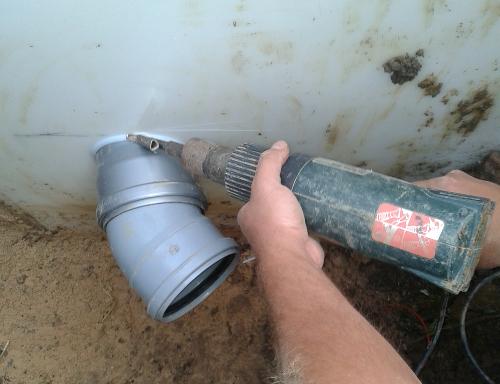
- Connect the sewer pipe to the pipe.
The slope of the sewer pipe depends on the diameter of the pipeline. With a diameter of 100-110 cm, the slope is 1-2 cm for each meter, and with a diameter of 50 mm 3 cm per meter, the head
Connection of Toppa septic tank
The next stage of installation of the Topas SEPPLICTION SECTION. To do this, you can use the PVS cable with a section of 3*1.5.
- The cable must be placed in a corrugated pipe and laid in a trench near the sewer pipeline.
- One end of the cable, through a special hole, insert into the treatment station and connect to terminals.
- The second end of the cable through a separate machine (6-16a) is connected to the distribution shield in the house.
The final stage is backfilling with dry sand and cement mixture. Sending the septic tank occurs simultaneously with filling it with water.
The installation is covered with a third, and filled to the same level with water. Thus, the pressure on the septic tank body is compensated. The process of sprinkling and filling with water continues until the septic tank body is completely underground.
Installation and connection of the Toppik septic tank: video
Tips for the operation and maintenance of the Topas septic tank
The durable and uninterrupted work of the Topas septic tank is possible subject to a number of rules for its operation and maintenance.
In the instructions for the treatment plant, a list of permissible and prohibited actions is given.
When operating, the Toppa septic tank is prohibited:
- throw construction waste into the system, polymer films and other inorganic compounds;
- pour water in a septic tank containing potassium permanganate;
- drain the disinfectants containing antibiotics and chlorine to the sewer system;
- throw a large amount of pets wool into wastewater;
- drain car oils, alcohol, antifreeze, alkalis and acids to the sewer.
During the lack of electricity, it is advisable to reduce water consumption in order to prevent the overflow of the septic tank chambers and the release of unpeeled drains into the external environment
Regular service septic tank is the key to stable operation of autonomous sewage. Service septic tank includes:
- checking the station and the quality of the purified waters;

- slotnik Erlift must be cleaned 3-4 times a year (remove the silt with a pump);
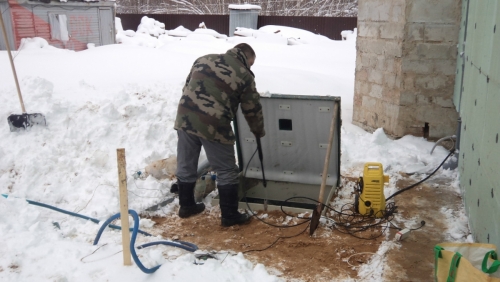
- the replacement of the compressor membranes should be carried out once every two years;
- the device for the fence of unprocessed particles must be cleaned three times a year;
- the filter of large fractions must be cleaned monthly;
- aeration elements need to be replaced every 12 years;
- the Toppik septic tank needs conservation in winter if it is not used.
Biological Cleaning Station Septic Toppa Modern installation for the arrangement of local sewage. Despite the high cost, the Topop septic tank gained popularity among consumers in different countries, due to the effective wastewater treatment, ease of use and minor operational costs.

